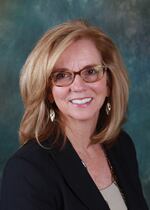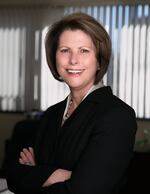COVID-19 has presented big problems for public universities, as students struggled to continue their education over the last few years. But in many ways, community colleges have borne the brunt of the pandemic’s effects on higher education.
In Oregon, community college enrollment fell nearly 24% last fall from pre-pandemic levels, according to the Oregon Higher Education Coordinating Commission. Some colleges have seen layoffs due to continuing declines in enrollment.
But, there are some bright spots. Oregon is investing $200 million into workforce development through Future Ready Oregon, which includes nearly $15 million to boost career pathway training programs at all of the state’s community colleges. The colleges also continue to see local support, with some getting large bonds passed this spring.
PCC celebrated the 10-year celebration of a scholarship program serving low-income and first-generation college students this year, and it recently created a writers’ residency program.
At the beginning of Kemper-Pelle’s career as Rogue’s president, in 2016, voters in Jackson and Josephine counties passed a $20 million bond for the college to finance construction programs and improve its facilities.
Lane Community College, in Eugene, also saw its community support a more than $121 million bond in 2020.
But, along with successes, the presidents have seen significant difficulties — many exacerbated by the COVID-19 pandemic.
Falling enrollment and overcoming challenges
“When you’re a larger college, you take the biggest hit first,” Margaret Hamilton, retiring president of Lane Community College, told OPB. “The larger community colleges, we’re such a cross-section of humanity, so we tend to take the hit.”
Hamilton pointed out that, while the state’s public universities also saw enrollment decline, but on average they only saw about 4% fewer students last fall compared to pre-pandemic.
“We were all double digits,” Hamilton said of the community colleges’ enrollment declines. “We were sweating every time those numbers came in, because we’re so enrollment driven. We just lost so many students.”
Lane saw enrollment plummet by roughly 30% this past fall compared to 2019, PCC saw it drop 23%, and Rogue enrollment declined 35%, according to state data.
Their new presidents now are challenged with getting those numbers back up.
Cathy Kemper-Pelle at Rogue Community College in Grants Pass said that, in recent years, her college made the decision to move toward “data-informed decision making” — working on more data collection and research in order to better understand students’ needs and their barriers to success.
“While the pandemic has lowered enrollments at RCC, and in community colleges across the country, we demonstrated early in the pandemic that we are able to pivot quickly and meet changing employer and student demands. We continue to adapt during the pandemic recovery, using data to inform our decisions regarding both employment needs and student success barriers,” Kemper-Pelle said.
At Oregon’s largest higher education institution, Portland Community College, Mark Mitsui said that understanding why students are leaving community colleges means looking at other opportunities available during the ongoing pandemic. Mitsui retired as president at the end of June.

Mark Mitsui retired from Oregon's largest higher education institution Portland Community College at the end of June.
Courtesy of Portland Community College
According to Mitsui, the pandemic has changed how some would-be students think about college. Instead of going to community college and getting into a higher-paying job, a lot of people have been facing pressure to find jobs straight out of high school in order to make ends meet.
“Inflation continues, wages are also rising in low-barrier-to-entry jobs,” Mitsui said. “Housing, child care, food — basic needs — insecurity remains high and inequitable.”
To make community college more appealing, Mitsui said, colleges need to continue helping students meet their basic needs through the implementation and expansion of supports like those in the recently-passed House Bill 2835. That Oregon law funds staff at all of the state’s public universities and community colleges who can help students access resources like food and housing assistance.
Related: Oregon bill funds ‘benefits navigators’ at public universities, colleges
Hamilton with Lane also acknowledged that the very specific needs, and the living situations, of community college students during the pandemic often differed from those of university students.
“Our students didn’t have the luxury of going into a dorm with the nice laptop that worked and the nice wi-fi that worked,” she said. “Our students were at home. Some of their parents were getting sick, losing jobs. They themselves were getting sick, losing jobs. Anybody in that household loses a job, they don’t have tuition money.”
Hamilton said LCC saw students drop out during the height of the pandemic for a variety of reasons — including the unfamiliarity and difficulty of remote learning.
“We’re going to have to woo them back,” she said.
Hamilton said that, although many students may still want a primarily in-person experience, she expects online and hybrid learning to continue to be a big part of college post-pandemic. She said the schools that adapt the best will be the ones students flock to.
“The schools that embrace the technology and do it well and make it engaging for students, … they’re going to be the survivors of all this. And that’s what we’re going to see in the next few years — who’s going to be able to do that,” she said. “Mediocre isn’t going to do it anymore, you’re going to have to be the best at whatever you do.”
Community colleges will help with pandemic recovery, but they need help too
Although it may take some coaxing to get enrollment numbers back up at community colleges, Kemper-Pelle of RCC said their recovery is a crucial part of Oregon’s post-pandemic recovery, both for their regions and for the state as a whole.
“Because we have the ability to provide both career training and transfer programs, we are positioned better than any other higher education institutions to address workforce needs,” Kemper-Pelle said.

Cathy Kemper-Pelle retired from Rogue Community College in Grants Pass at the end of last month.
Courtesy of Rogue Community College
She said Rogue has focused on its partnerships with K-12 schools to allow students to get credit at RCC while still in high school, as well as transfer agreements with universities to allow students to smoothly make the transition from the college to a four-year university, if they choose.
“RCC is an integral part of the pandemic recovery in Southern Oregon, and we will continue to partner with universities and employers to ensure that our students are ready for their next step in their career pathway,” Kemper-Pelle said.
Hamilton with LCC is a registered nurse and has a background in health care in addition to higher education. She said she’s already hearing the demand for more health care workers in her community, such as certified nursing assistants and paramedics.
“These folks all need to be trained, and without a doubt that’s a big part of our role,” Hamilton said. “Everybody in Oregon and in the whole nation understands how needed these community colleges are to get us out of the pandemic.”
But, she said, the small class sizes and technology needed to teach specific training courses make them much more expensive than, for instance, large university lectures.

Margaret Hamilton retired from Lane Community College at the end of June. Along with her work in higher education, she also has a background in healthcare.
Courtesy of Lane Community College
Hamilton said she, like other college and university presidents in Oregon, has done a lot of advocating for more funding, as well as for a change to the state’s funding model. Currently, the funding community colleges receive from the state is largely dictated by enrollment numbers. That can mean even more of a financial loss when fewer students enroll, like over the last few years. Hamilton argues those are the wrong priorities.
“It’s what you teach and who you teach that really should affect your funding,” Hamilton said, meaning that schools offering specialized career technical programs and educating students who are low-income or otherwise underserved should help determine costs. That means funding could cover support programs and wrap-around services for students.
Mitsui, as the departing president of the state’s largest higher education institution, also saw a big need for an increase in state funding for community colleges. He said it’s in Oregon’s interest to ensure a skilled workforce in the years to come.
“The community colleges will continue to advance economic mobility by bridging both the skills gaps and equity gaps in living-wage careers, through strategic partnerships with [community-based organizations], K-12 districts, employers, the philanthropic community and state agencies... ” Mitsui said. “More state funding is needed, though, to truly bridge the equity and skills gaps, statewide.”
